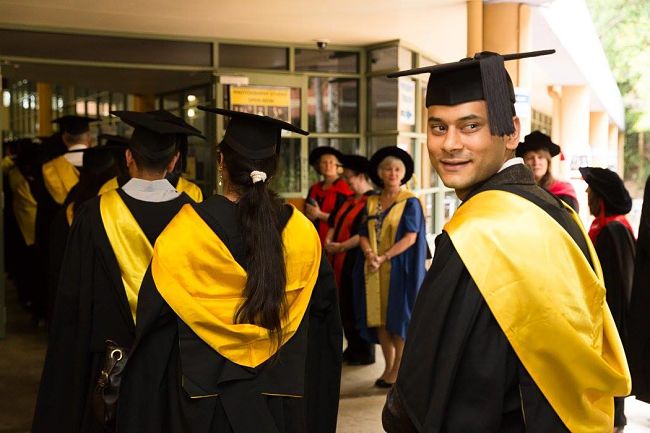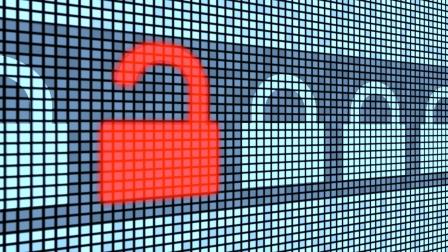
Graduates at Southern Cross University. Pic: Facebook.
NSW universities recorded a combined operating surplus of $631 million last year and have coped with government funding cuts by reining in spending and increasing their income from student fees and other sources, an audit has found.
Auditor-General Margaret Crawford’s report, Universities: 2016 Audits, released yesterday (Tuesday) by the Audit Office of NSW, found that the state’s ten universities were managing to stay afloat despite government cutbacks.
Ms Crawford said: “Universities are managing the impact of continued downtrend in Commonwealth government grants by diversifying revenue and constraining expenditure.”
She said universities were now ‘less reliant’ on government grants.
The audit found that all of the universities recorded a surplus in 2016 and their combined growth in revenue exceeded their expenditure growth by 1.1 per cent, compared to a negative position (of 1.3 per cent) in 2015.
However, at an individual level, five universities saw their rate of expenditure growth surpassing their revenue growth.
Charles Sturt University had the highest negative earnings gap at 1.8 per cent, due to increased tuition contracts, while Sydney University’s negative earnings gap of 1.7 per cent was primarily due to an increased wage bill and a write down of capitalised project costs.
Three other universities also had a negative earnings gap: University of New England (1.2%), University of Western Sydney (1.1%) and the University of Wollongong (0.9%).
Southern Cross University had the highest positive earnings gap at 10.7 per cent, driven primarily by an increase of $13.4 million in Commonwealth Government Education Investment Fund. Next was University of Technology Sydney at 3.9%; University of NSW with 3.7 per cent; Newcastle University 2.9% and Macquarie University with 2.3%.
Much of this financial buoyancy appears to be from a 25 per cent increase ($458 million) in overseas student revenue, a massive jump of 71.4 per cent since 2012.
Last year was the first time NSW universities have earned more from overseas students’ course income than from domestic students’ course income.
Ms Crawford said: “Some NSW universities’ business models depend on international students’ intake to be financially sustainable. These universities manage income concentration risk by focusing on increasing the geographical diversity of overseas students.”
The balance between income gained from student course fees and government grants has been shifting over the last five years.
Income from student course fees jumped from 39 per cent in 2012 to almost 46 per cent in 2016, whereas Commonwealth grants have dropped from 42 per cent of universities’ income in 2012 to 36 per cent in 2016.
The report echoes an earlier Deloitte Access Economics study using data from 17 Australian universities, which found that Australia’s universities receive sufficient revenue through government funding and student fees to cover the cost of teaching most degrees.
Two major exceptions were dentistry and veterinary science, which were both found to be underfunded.
The study compared the average cost of delivering courses and said this had increased by 9.5 per cent between 2010 and 2015 while revenue went up by 15 per cent over the same period.
Managing the risks
Despite these encouraging numbers from both surveys, universities face an uncertain future after federal Budget measures slugged them with an efficiency dividend of 2.4 per cent in May, alongside hiking up student fees and pushing graduates to repay loans more quickly.
The report identifies the top five strategic risks to NSW universities:
- Government policy changes
- Technology disruption
- Increasingly competitive market for international students
- Future financial sustainability
- Investment in research not providing the desired outcomes and excellence
The Auditor-General said some universities’ heavy reliance on overseas students made them vulnerable to fluctuations in overseas student numbers and this risk needed to be planned for and managed.
Ms Crawford also said universities needed to keep pace with the practical demands of the job market, particularly where technology was concerned. The report said that NSW universities’ current course enrolment statistics did not appear to mirror published skills shortages.
“Courses with the highest proportion of enrolled students such as creative arts, society and culture do not mirror the skills shortage requirements in NSW for health, ICT and engineering,” it said.
“Aligning students’ enrolment with the fields of skill shortages within the state would ensure funds are directed to educate graduates that can be employed.”
Another risk flagged was the need for universities to have a strategy for dealing with cyber threats and threats to intellectual property by tightening up their information security.
“NSW universities need to review the design and effectiveness of their information security controls to ensure intellectual property, staff and student data are adequately protected,” the Auditor-General recommended.
This was mainly around password settings and administration of user access. User password settings need to be improved on the financial systems to help to reduce the risk of data leaks and inappropriate access.
The 2016 Threat Report of the Australian Cyber Security Centre, identified intellectual property as a potential target for cyber criminals.
“Universities generate a significant amount of intellectual property through their investment of public and commercial funds into research. The report also noted that cyber criminals are using increasingly sophisticated ways to elicit this high value,” said the audit.
Ms Crawford said that some universities were addressing these risks through ‘stress testing and scenario analysis models’ to understand and plan appropriate responses.
Comment below to have your say on this story.
If you have a news story or tip-off, get in touch at editorial@governmentnews.com.au.
Sign up to the Government News newsletter

